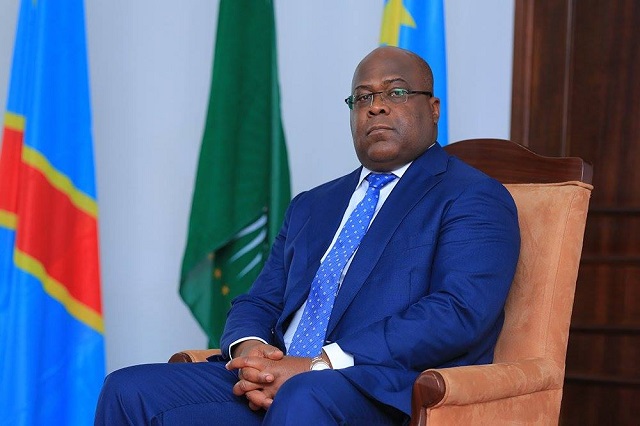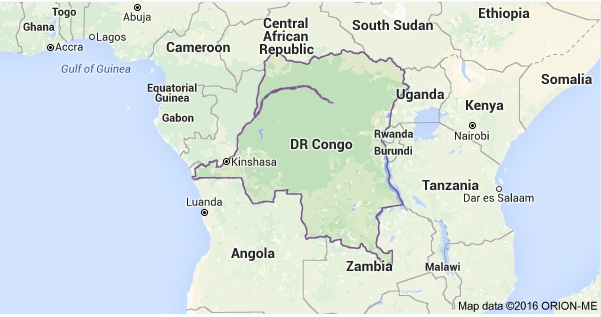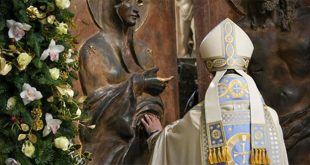
How politics in Kinshasa combines with international power politics to undermine regional efforts for peace in DRC
THE LAST WORD | Andrew M. Mwenda | Once again, the Democratic Republic of Congo (DRC) is on fire. This week, M23 rebels captured the strategic town of Goma and are now advancing on Bukavu. At an emergency session of the UN Security Council in New York, all the major global powers to wit the Americans, the French and the British were calling for a ceasefire, another way of asking M23 to call off its offensive. In Kinshasa, mobs of hooligans and ruffians mobilized and paid by the government attacked and looted the embassies of Uganda, Rwanda, the USA, France, Belgium and the UK. President Felix Tshisekedi remains defiant. In characteristic style, he refused to attend an emergency summit of the heads of state of the East African Community (EAC) called by its chairman, President William Ruto of Kenya.
How did we come so late and dangerously to this point? In March last year, I was, totally out of the blue, approached by the top leadership of the M23. I thought they had a story with good journalistic value to tell me. Instead, they told me they are looking for a way to reach out to the government in Kinshasa to talk peace. They told me that in October 2020, at the invitation of Tshisekedi, they had sent a delegation to Kinshasa for negotiations. The leader of the delegation was Lawrence Kanyuka, the director of communications for the M23 and a Luba by tribe, just like Tshisekedi. They spent 14 months in Kinshasa in peace negotiations.
Because Tshisekedi had also been in opposition, the two sides agreed that there was no need to fight. They signed an agreement whereby 3,000 fighters of M23 would be reintegrated. These fighters had been in the Congolese army, FADC, before they rebelled. The army had kept on its payroll earning salaries (being pocketed by someone in Kinshasa) and even getting promotions over the years. It was agreed that they would be taken to Bas’Congo, near the border with Angola, from where the integration exercise would be conducted. M23 had 6,000 fighters. The balance of 3,000 would also be resettled in Bas’Congo, far away from their ethnic base in Eastern DRC.
The government in Kinshasa was supposed to organize logistics to transport these people to Bas’Congo. M23 surrendered their weapons and assembled at an agreed place to be evacuated. However, Kinshasa was unable to provide any sustenance to the assembled fighters and neither did it provide transport for them to go to Bas’Congo. Instead, in November 2021, after months of waiting and frustration, the M23 were surprised when they were attacked by FADC. Unarmed, they were massacred like grasshoppers. FADC came with journalists, television cameras and all to cover this offensive. M23 tried to reach Tshisekedi, convinced that either someone was acting without his authority, or he was being misinformed, but all in vain. It had to defend itself. That is what sparked of the new war.
“We believe the Americans, the French, the Belgians and to a small extent the EU have a lot of influence in Kinshasa,” Kanyuka told me. They asked if I could help connect them to the embassies of these countries in Kampala to help them establish an informal channel of communication with Kinshasa. I was excited and went to work. I called the French who refused any communication with M23. I called the EU one of whose officials met the M23 delegation and took voluminous notes. I called the Americans who feigned interest, yet they only sought to exploit this golden chance to gather intelligence, distort the facts, manipulate the situation and thwart this effort. I was shocked, but not surprised, when a UN “panel of experts” wrote a report claiming I had contacted them seeking to help remove sanctions on M23. I didn’t even know there were sanctions against M23 and neither did its leaders talk to me about sanctions.
Anyway, I wrote, in detail, about these diplomatic intrigues last year. But the lesson I learnt is that governments in this region which are most affected by instability in DRC should take the outstretched hand of the M23 for peace seriously. The big powers have interests that are not difficult to see. I reached out to Kinshasa, and they sent me a highly classified and well-connected envoy whom I told these facts. I do not know what he reported back home and the lessons they drew from the conversation. However, I knew presidents Ruto, Yoweri Museveni of Uganda, Paul Kagame of Rwanda, Samia Suluhu Hassan of Tanzania and Joao Lourenco of Angola were all committed to finding a peaceful solution to the conflict. However, Kinshasa kept a belligerent stand against talks.
For many years, there have been promising regional efforts to resolve the M23 conflict peacefully. One such effort was under the leadership of the International Conference on the Great Lakes Region (ICGLR) in 2013-15. Joseph Kabila was the president of DRC; Museveni was chair of the ICGLR). A combined force of South African and Tanzanian troops invited by Kinshasa had beaten M23 rebels forcing them to run to Uganda. Yet the ICGLR agreed that M23 has legitimate grievances and legitimate demands. To settle the conflict, regional powers agreed to finance a reintegration of M23 forces in the FADC and a resettlement of others into civilian life. Each country, including DRC was supposed to contribute $20m.
Immediately after the conference ended, Kabila deposited his $20m on the ICGLR account. A day after, the UN came on the scene and offered to finance the reintegration and resettlement program. Immediately this was offered, Kabila returned and picked his money. The UN, that very institution in whose Congolese have always kept their faith but which has been responsible for the many tragedies of that country, never kept its promise. To avoid this golden opportunity from being lost, Museveni convened a series of meetings of the ICGLR. In one of the heads of state summits in Munyonyo, he advised Kabila to ignore the UN and implement what the ICGLR had agreed – reintegrate and resettle the M23.
“These people are in refugee camps,” Museveni said referring to M23, “and we don’t have fences around these camps. If their issues are not settled, they will escape and come to cause you problems.” Museveni’s words fell on deaf ears. As months turned into years, M23 did exactly what Museveni had predicted. When Tshisekedi came to power, and as already pointed out above, he signed a similar agreement with M23 but breached it without provocation, explanation or justification. This time it is the EAC that took on this issue in large part because DRC had joined it.
The EAC leaders, together with Tsishekedi, again agreed that the M23 have legitimate grievances and legitimate demands. To stop the fighting and create conditions for the implementation of the peace agreement, the EAC deployed a force to stand between the two sides. Uganda, Kenya and Burundi deployed troops. However, Kinshasa now began demanding the EAC force attack M23 in violation of the understanding in Nairobi. Burundi agreed but Kenya and Uganda refused. Tshisekedi responded, again without provocation, justification or explanation, by ordering the EAC troops to leave eastern DRC.
But before issuing that order, Tshisekedi called Museveni and President Evariste Ndayishimiye of Burundi asking them to keep their troops in the DRC. Museveni refused saying it would be dishonorable of him to keep UPDF in Goma when Kinshasa had officially dismissed the EAC force from his country. Ndayishimiye agreed to Tshisekedi’s request. The leaders of EAC did nothing to disapprove of this behavior by one of their own. Only Kagame wrote to his colleagues to register his displeasure and requested for a face-to-face extraordinary summit to discuss this issue.

Meanwhile, Tshisekedi invited soldiers from SADC to come help him fight M23. South Africa, Tanzania and Malawi sent troops. But SADC did not consult its sister organization, the EAC, on why the agreement with Kinshasa had failed. This lack of cooperation and coordination has been bad for this region. When Mozambique was under pressure from her own rebels, it invited SADC for help. SADC sent a force that was ineffectual. The problem is that SADC countries have allowed their militaries to atrophy. President Filipe Nyusi called on Rwanda to help. Kagame requested he first gets a no objection from SADC members, which Nyusi did. That is how Kigali came to deploy in Mozambique to fight rebels there.
Anyhow, once deployed in DRC, South African troops attacked M23 bases and were beaten. Rather than seek a political solution to the M23 problem, Tshisekedi doubled down and hired European mercenaries to reinforce SADC. M23 launched an offensive capturing more and more territory, leading to the fall of the strategically important town of Goma. The Burundian troops ran away, the Tanzanian troops got stranded at Goma airport, the South Africans were surrounded and surrendered while the Romanian mercenaries were arrested, escorted through Rubavu to Kigali and flown home. This disaster would not have befallen Tshisekedi had he kept the EAC force in Eastern DRC. Let us remember that when the EAC force was in Congo, M23 did not attack FADC.
I remember when the EAC agreed to deploy in DRC, a team of congressmen from the USA visited Museveni in early 2022 at state house Entebbe. They wanted to know what was going to happen if a “malevolent third party” (and I understood them to mean Rwanda) attacked the EAC pretending to be M23. Museveni assured them that no one would dare attack an EAC force. They asked for clarification, but Museveni insisted they take his word. “Please trust me,” Museveni said. It was obvious to me that the Americans had some biases about Rwanda.
The continued crisis in the Congo stems from the refusal of Kinshasa and her allies and proxies in the Western world to accept that M23 is primarily a local Congolese problem, and that Rwanda’s involvement is derivative. Kinshasa often claims that M23 rebels are Rwandans, and her western allies and proxies repeat this chorus. At one meeting of the EAC heads of state in Nairobi, Tshisekedi even said that M23 rebels should return where they came from. Museveni intervened saying they had escaped from Uganda as he had predicted and warned Kabila about. Tshisekedi seemed surprised because he meant to accuse Rwanda of sending them into Congo.
Rwanda has serious security interests in eastern DRC. The first is the presence of FDLR, remnants of the genocidal Rwandan army seeking to overthrow the government in Kigali and commit yet another genocide against the Tutsi. FDLR may be militarily weak. But it bears an ideology of Hutu power that is toxic in Rwanda. Kigali will never rest as long as FDLR are right across the border. Secondly, the FDLR, in alliance with the Congolese army (FADC), threaten to exterminate Tutsi Congolese. They steal their cows, grab their land, rape their wives and daughters and kill their children. This makes Kigali support M23 to defend themselves (and who wouldn’t) but also to help them fight FDLR.
Therefore, any resolution of the Congolese crisis has to take serious cognizance of two issues. First, FDLR must be neutralized. Second, Tutsi Congolese must be recognized as citizens of that country and then afforded all the protections due to citizens. None of these objectives can be realized without support from Kigali. Indeed, when he was first elected president, Tshisekedi met Kagame. The Rwandan president told his Congolese counterpart that Uganda, Burundi and Rwanda have rebels on his territory hostile to them. To solve this problem, Kagame advised Tshisekedi to invite the armies of the three countries to help him flush them out. Tshisekedi agreed. When he returned to Kinshasa, he only invited Uganda and Burundi and excluded Rwanda. Yet Kigali had the biggest threat of the three.
I do not know the internal politics of Kinshasa that induces its leaders to ignore Kigali’s concerns. I also do not know the external influences on Kinshasa that make Congolese leaders refuse an outstretched arm of Kigali for a solution. What I know is that Congolese belligerence toward Kigali and Kagame under Kabila and now Tshisekedi has been injurious to the cause of peace in Congo.
On Friday, SADC heads of state met in an extraordinary summit in Harare and agreed that a military solution to the crisis in DRC is neither prudent nor desirable. They also agreed that there should be a joint summit of the EAC and SADC on DRC. This is a very important development because for the first time, the two regional bodies are seeking to cooperate and coordinate their efforts. They condemned M23 for defending themselves but did not reprimand their colleague, Tshisekedi, for his belligerence and intransigence that has led to the current crisis. Let us hope this regional cooperation and coordination helps the situation.
****

amwenda@ugindependent.co.ug
 The Independent Uganda: You get the Truth we Pay the Price
The Independent Uganda: You get the Truth we Pay the Price




Well captured
Thank you Mr Mwenda. Very elaborate and informative! Let’s hope Tshisekedi cooperates with all the EAC forces, and also prioritize the demands of the M23 as the last option, if he means well for his country and people.
Let’s hope the cooperation yields some fruits of everlasting peace in Congo.